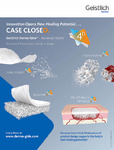Cross-Cultural Adaptation, Translation, and Validation of the Spanish Foot and Ankle Outcome Score Questionnaire

Use this link to cite
http://hdl.handle.net/2183/29899Collections
- Investigación (FEP) [507]
Metadata
Show full item recordTitle
Cross-Cultural Adaptation, Translation, and Validation of the Spanish Foot and Ankle Outcome Score QuestionnaireAuthor(s)
Date
2020-05Citation
Navarro-Flores E, Losa-Iglesias ME, Becerro-de-Bengoa-Vallejo R, et al. Cross-cultural adaptation, translation, and validation of the Spanish Foot and Ankle Outcome Score questionnaire. Int Wound J. 2020;17: 1384–1390. https://doi.org/10.1111/iwj.13400
Abstract
[Abstract] The Spanish Foot and Ankle Outcome Score questionnaire (FAOS-S) may be considered a health evaluation tool with 42 questions for assessing foot health disorders. To date, FAOS has been validated in different languages, but a Spanish version was lacking. Consequently, the purpose of this study was to translate and validate the Spanish version of the FAOS (FAOS es). A suitable method was developed for the translation protocol and cross-cultural validation from Swedish to Spanish. Regarding the total marks from each domain, agreement degrees and confidence were analysed using the Cronbach's α and intraclass correlation coefficient, respectively. In addition, the mean ± SD differences between pretest and posttests were calculated and completed using of the Bland and Altman distribution plots. Excellent agreement between the two versions based on Cronbach's α was demonstrated. Five domains consisting of pain, symptoms of foot disorders, activities of daily living, sports and recreation, and foot and ankle quality of life were added together to obtain the total score. Excellent retest reliability was shown for the total score. Test/retest reliability was excellent for the pain, stiffness, other foot disorder-related symptoms, and quality of life domains. There were no significant differences among any domain (P > .05). There were no statistically significant differences (P = .000) for the mean ± SD differences between pretest and posttests (56.2524 ± 19.064 [51.98–60.52] and 57.45 ± 21.02 [52.74–62.16] points, respectively). Bland and Altman plots or clinically pertinent variations were not statistically significantly different. The FAOS is considered a strong and valid questionnaire with adequate repeatability in the Spanish community.
Keywords
Health-related quality of life
Calidad de vida
Pain measurement
Medida de dolor
Questionnaire
Cuestionario
Calidad de vida
Pain measurement
Medida de dolor
Questionnaire
Cuestionario
Editor version
Rights
Acceso aberto
ISSN
1742-481X





